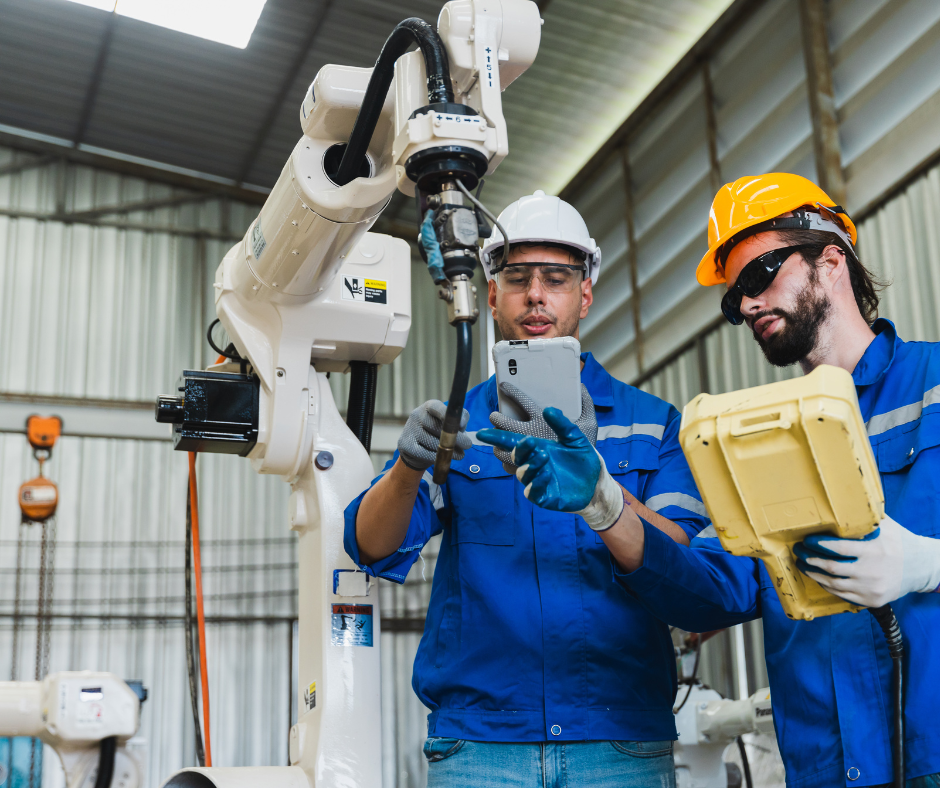
Different people have different reactions to AI. For some, it’s an opportunity to optimize work and life. Collect the data, use AI for predictive maintenance calculations, and replace those valves before they break! Use AI to summarize data and produce rough drafts of required reports! Speed up design and production of new machinery with AI input!
For others, the goal of AI in the workplace is much narrower: Save money!
Sure, replacing valves before they break saves money, but for the folks who see AI primarily and a way to save money, it’s often actually Save money on labor costs!
Can AI really save money?
Automation, including AI-powered automation, can absolutely save labor costs. Increasing productivity through automation allows businesses to grow without adding staff.
The trouble is, the benefits of automation aren’t always…automatic.
Saving money…at a cost
One example is the situation that comes up in elder care homes. A popular software package uses an algorithm to determine optimal staff numbers. The program is based on actual measurements of the amount of time used in various tasks by human workers. Multiply the number of occasions for each task during a day at a facility by the number of minutes the task requires and you know how much manpower you need for one day — except of course that’s highly simplified and wouldn’t need a digital algorithm. Instead, let the algorithm determine how many people are needed to cover all the tasks. Hire only that many people. You should now have exactly the right number of human workers.
However, human workers don’t actually work like that. They work at different speeds depending on myriad factors. They talk to their charges. They need to move from one task to another and sometimes they need a little mental margin between tasks. They get tired and move more slowly late in their shifts.
With one thing and another, using the algorithm to determine the correct number of workers actually resulted in threats to the lives of the residents of the care homes.
Warehouses have seen similar effects, as bringing in more robots sped up the processes beyond what humans could do safely, resulting in more injuries in automated warehouses.
Chopping up the jobs
Vox pointed out one of the reasons that automation doesn’t always improve things. Not all tasks can be automated. Estimates suggest that one third of the average job in the United States can be automated. In theory, this could mean that jobs done by four employees could, with the help of AI and robots, be done by three. A significant savings.
But that doesn’t work in real life, as we’ve seen in elder care homes. Automatic one third of a worker’s tasks doesn’t automatically divide the remaining tasks up neatly among other workers. So employers instead divide up the job and outsource the various bits and pieces. Instead of four people taking full responsibility for a range of tasks, you have two people in the workplace and a rotating cast of external workers doing specific jobs that require some level of supervisions and follow up.
After all, if you choose to use AI and computer vision to automate quality control on your production line, you might be able to replace your quality control person with that machine. But you might instead be cutting five minutes worth of time out of every hour for some workers. Now they have 40 minutes of extra time in their day. At this point, if you’re doing what most companies claim they plan to do, you will give that worker an additional, more creative and challenging task. What are the chances that you have such a task that will consumer just those 40 minutes?
Instead, you may add a new responsibility, which will probably add more than 40 minutes to that worker’s day.
Using AI well
A recent study found that, while 60% of companies with more than 10,000 employees are using AI, only 6% of all U.S. companies are doing so. Interestingly, more than half of American workers don’t know whether their companies are suing AI or not.
About 20% of U.S. workers claim to be using AI on the job, but almost none of them were trained to do so. In fact, recent research suggests that the majority of these workers don’t let their employers know that they are using AI tools.
What if your engineers hid the fact that they were using calculators and pretended to be using slide rules instead? That’s about what’s happening with AI in many workplaces.
We need to get better at using AI in our workplaces. And maybe we should start with the ethical questions.
